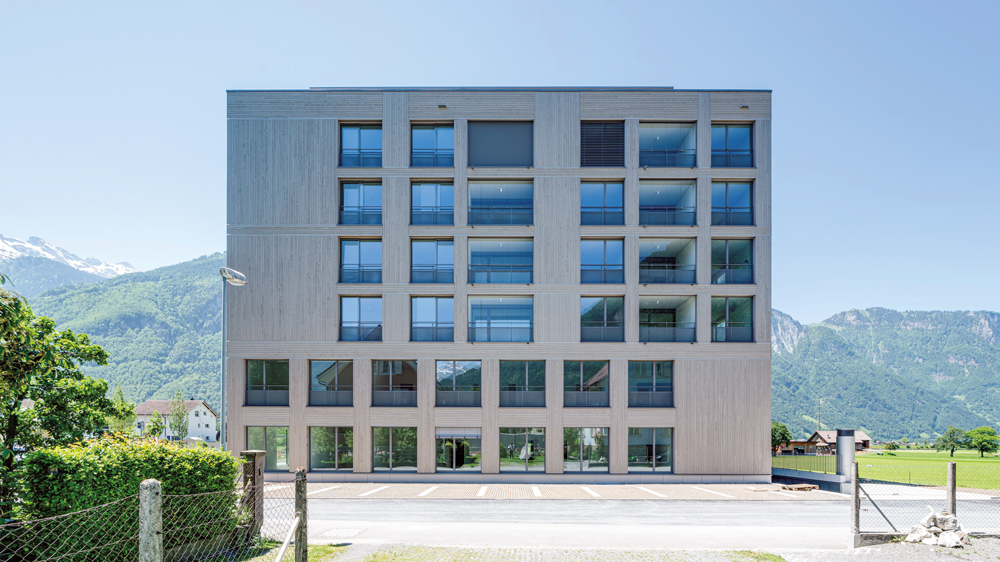A new urbanity is emerging at the Altdorf train station

The urban center around the Altdorf train station is taking shape. The sustainably designed residential and commercial building "Cubo" gives high priority to social exchange. It is the second building developed by CAS on the Byfang South site after the “Vena” residential and commercial building opposite.
«With this residential and commercial building, we focused on a sustainable concept. Ecology, economy and social issues are in harmony. With “Cubo”, the focus is on the social and functional mix of the building. This is achieved with diverse and communal forms of use. With these future-oriented approaches, incentives are created for the establishment of new places of work and life in the region,” explains René Chappuis, management of the responsible CAS Group. The approach is convincing. The apartments and office space were rented out within a very short time. The opportunity to meet in the building in everyday life is particularly popular with commuters and newcomers.
Staircase as a meeting zone
The cubic building shell encloses two commercial floors, four residential floors and an attic floor. A total of 36 high-quality rental units with 2.5 to 4.5 rooms have been realized. “Encounter, exchange and the opportunity for joint meetings characterize the room concept. The building surprises with a very generous access zone. The atrium, which is lit by daylight, also serves as a meeting place to promote social exchange between the residents,” explains Helen Chappuis, Management and Head of Architecture. To promote social communication, the laundry room is also located on the ground floor and designed as a washable area.
Green electricity from the roof
During the planning, a high priority was given to sustainability. The building has a modern wooden facade and is heated with a groundwater heat pump, which is fed via the photovoltaic system installed on the flat roof. Charging stations for electric cars can easily be made available in the garage. The PV system with an output of 36 kilowatts produces around 34,000 kilowatt hours of green electricity per year. This means that around six tons of CO2 emissions can be avoided per year, which corresponds to around 42,000 kilometers driven by car. As part of an association for self-consumption (ZEV), the solar power is consumed on site as far as possible. In summer, excess solar power flows back into the grid, in winter additional energy is drawn from the public grid. Thanks to this innovative concept, the tenants receive solar power from their own roof, which costs even less than mains power.